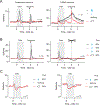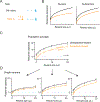Neural Circuitry of Reward Prediction Error
- PMID: 28441114
- PMCID: PMC6721851
- DOI: 10.1146/annurev-neuro-072116-031109
Neural Circuitry of Reward Prediction Error
Abstract
Dopamine neurons facilitate learning by calculating reward prediction error, or the difference between expected and actual reward. Despite two decades of research, it remains unclear how dopamine neurons make this calculation. Here we review studies that tackle this problem from a diverse set of approaches, from anatomy to electrophysiology to computational modeling and behavior. Several patterns emerge from this synthesis: that dopamine neurons themselves calculate reward prediction error, rather than inherit it passively from upstream regions; that they combine multiple separate and redundant inputs, which are themselves interconnected in a dense recurrent network; and that despite the complexity of inputs, the output from dopamine neurons is remarkably homogeneous and robust. The more we study this simple arithmetic computation, the knottier it appears to be, suggesting a daunting (but stimulating) path ahead for neuroscience more generally.
Keywords: arithmetic; circuitry; dopamine; learning; prediction error; reward.
Figures




References
-
- Ayaz A, and Chance FS (2009). Gain Modulation of Neuronal Responses by Subtractive and Divisive Mechanisms of Inhibition. J. Neurophysiol 101, 958–968. - PubMed
-
- Bayer HM, Lau B, and Glimcher PW (2007). Statistics of midbrain dopamine neuron spike trains in the awake primate. J. Neurophysiol 98, 1428–1439. - PubMed
Publication types
MeSH terms
Substances
Grants and funding
LinkOut - more resources
Full Text Sources
Other Literature Sources

